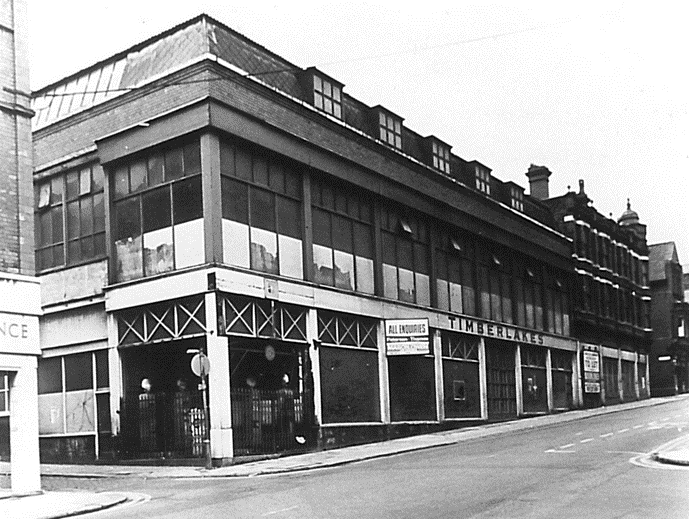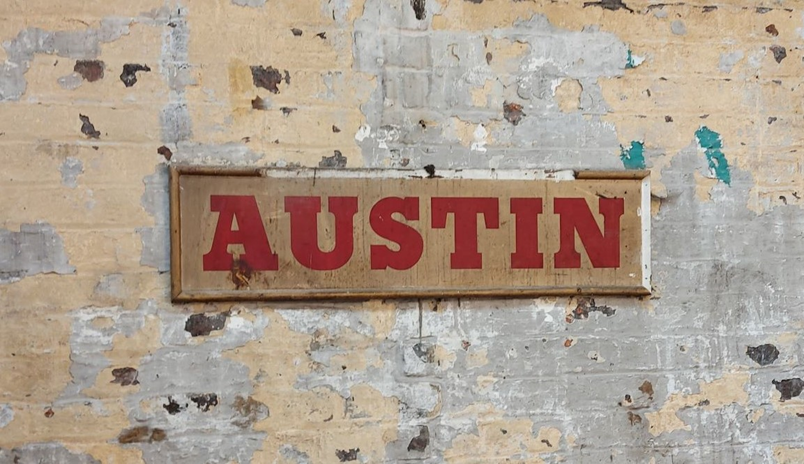High Riders to Rolls Royces

By Jim Meehan
For the best part of ninety years HH Timberlake was a household name in Wigan. It was synonymous with quality cars and motoring. The driving force (no pun intended) behind the company was Herbert Henry Timberlake or Bert to his friends. He was born in Maidenhead in 1870 and grew up learning how to make bicycles in his father’s factory. The company claimed to be the oldest bicycle factory in the world. They made high riders which became more popularly known as penny farthings. When the modern safety bicycle and pneumatic tyres were invented in the 1880s they did not move with the times and the company ran into difficulty.
This prompted Bert to move north with his uncle William to set up a network of bicycle depots in Lancashire and Derbyshire. The late 1800s saw a “cycling craze” as bicycles became safer and more affordable. Cycle racing was a popular spectator sport, and many banked tracks were built around the country. Bert was an accomplished racer moving around the country to race for a number of clubs. While staying in Buxton he fell in love with, and married, Florence Newbold the guesthouse keeper’s daughter. Shortly after, Bert and Florence moved to Wigan and his uncle William moved to Southport.

The King Street shop front in the 1890s
They opened bicycle depots in both towns in 1891. HH Timberlake’s bicycle depot in Wigan was in Victoria Buildings on King Street. Here they made and sold “bicycles, tricycles, bassinettes and mailcarts”. Bert and Florence settled in Park Crescent before moving to Trafalgar Road. They had a son in 1892 who was named after his father. He was HH, or Bert junior and would be their only child.
In the 1990s William and Bert were involved in an ill-fated scheme to set up a Trotting and Athletic Company at Springfield Park. Running, cycling, and trotting tracks were built and there was some initial success. It went bust though in 1901. The ground would be used briefly by Wigan Rugby League club and later became the home of Wigan Athletic. Shortly after this failure William returned south and Bert focused on his growing business in Wigan.
It was a time of rapid change. Companies like Rover and Humber had started as bicycle manufacturers but by the early 1900s were making cars. Bert had learned from his father’s mistakes and was determined to move with the times. He made the most of these rapid developments becoming the first in the town to sell motorcycles and cars. His reputation was growing, and he endeared himself to Lord Lindsay by transporting him around his constituency during the 1903 by-election.

Architect's drawing of the Arcade Street Garage circa 1913
Timberlake’s needed to expand. Arcade Street and Library Street had recently been constructed. Bert commissioned a new purpose-built garage and workshop on Arcade Street behind his King Street premises. Bolton architects Ormrod and Pomeroy designed a revolutionary two-story building. It was steel framed which removed the need for pillars. There was a lift to carry large vehicles between floors, allowing cars to be displayed in first floor windows. They also rented cars and ran charabancs from the site.
The firm’s reputation took a dent in 1912 when one of their charabancs caused a fatal accident. On the way to Blackpool it had overtaken a car and hit a cyclist coming in the other direction. HH Timberlake was found liable and ordered to pay £750 to support the cyclist’s widow and three children.
As WW1 started Timberlake’s supported the war effort by making shell casings. They showed versatility by offering a service converting vehicles to run on town gas to overcome the petrol shortage. They also offered driving lessons to women conscious that many men were away fighting. This helped them come through the war in good shape sparking a period of rapid growth. In the 1920s they built three new showrooms and garages on Library Street, transforming that area of the town centre.
 A caricature of HH Timberlake from the Wigan Examiner 1928
A caricature of HH Timberlake from the Wigan Examiner 1928
In 1922 Ormrod Pomeroy and Foy designed a high-quality building at number 22. From here they would sell a range of cars including Rolls Royces. Directly across the road was a depot selling parts and accessories as well as motorcycles. In the late 1920s they would construct a huge three-story building with a two-story glass front, and incredibly, a fully functioning garage and paint shop on the second floor. A huge lift carried vehicles to all of the floors. This building would later become Wallpaper Supplies.

The showroom at number 22 Library Street
In the 1920s and 1930s the company was at its peak. Bert junior had trained as an engineer at Vulcan Motors in Southport and set up home there. He and his father were involved in many motor engineering companies as directors and agents. This included the short-lived Westwood Motors, the more successful Pagefield Vehicle Company, a subsidiary of Walker Brothers, and Lea and Francis who built iconic cars until the 1960s.
HH Timberlake’s were now selling a range of cars including from volume producers like Austin, Morris, and Ford, as well as more exclusive ranges like Standard, Triumph, and Alvis, and of course Rolls Royce. They offered everything motorists needed including driving lessons, insurance, servicing, parts, and accessories. Things you associate with modern dealerships. The start of WW2 would bring car sales almost to a halt. The company would switch to making shell casing once more. Bert senior did not live to see the end of the war. He died in 1944 aged 73. Bert junior became the MD and was ably supported by his mother Florence as a director. By now he had his own son Keith who also became a director and sales Manager.

Accessories and motorcycles were sold from 15-21 Library Street
At the end of the war they once again showed their ability to adapt. They bought up ex-army vehicles and converted them for civilian use selling them to returning servicemen. The company continued to prosper in the 50s. Bert junior was now in his 60s and Florence had moved to Llandudno where she died in 1954 aged 88. She was laid to rest next to her husband in Christchurch, Parbold. The family were ready to hand over the reins of the company. It was sold to Hatton’s of Southport in 1959 who retained the HH Timberlake name. Bert junior and his son Keith moved to Devon where Keith died at the age of 49. His father outlived him and passed away in 1987 aged 94. Keith’s son would become a senior figure in the finance sector.
In the 1960s running a modern car dealership from Library Street and Arcade Street became untenable. New expansive premises were built on Wallgate in 1968 to house the dealership which was still known as Timberlake’s. In the 1970s John Baldwin took over the company. He was reluctant to lose the value and reputation of the brand and the dealership became Baldwin Timberlake.

Timberlake's Library Street premises up for sale in 1970
The huge premises on library Street lay empty for four years before being bought by the Cohen Brothers to become Wallpaper Supplies, part of their chain of DIY stores. They would later sell it to the Bracek family who remain owners today. The premises at 22 Library Street became a carpet and furniture shop before becoming an upmarket hairdresser. The premises across the road has been home to a recruitment agency and currently houses an Architects.
Baldwin Timberlake became a dealership for Leyland motors. The 1970s and early 80s were a tough time for the British motor industry. In September 1983 after months of speculation the Wigan Observer announces the closure of Baldwin Timberlake with the loss of 43 jobs. John Baldwin blames “the recession”. Roger Stott, the local MP, blames the Thatcher Government for the collapse of the British motor industry. Whatever the reason, the closure brings to an end the town’s ninety-year association with the Timberlake name.

A sign from the 1940s discovered behind panelling in Wallpaper Supplies 2021
Listen to the Article